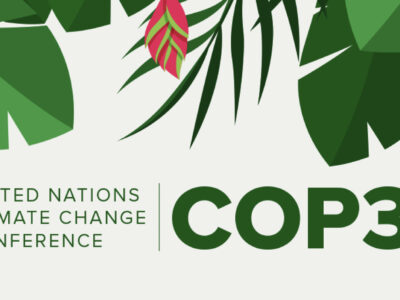Deep convection refers to the thermally driven turbulent mixing that moves air parcels from the lower to the upper atmosphere. In the tropics, this generally involves the vertical ascent of warm moist air and, ultimately, precipitation. But while some aspects of deep convection are well understood, others remain a mystery.
Dr. Larissa Back, a NOAA Climate and Global Change Postdoctoral Fellow, has been pondering these mysteries since her undergraduate days. Back studied atmospheric convection at Cornell and the University of Washington, and currently works with Kerry Emanuel in MIT’s Department of Earth, Atmospheric, and Planetary Sciences. She stopped by Lamont on Wednesday to share some thoughts on her recent work.
Back uses new data and innovative methods to explore questions relating to the location, timing, and intensity of rainfall in the tropics. She addresses the issue of location by examining the relationship between rainfall and convergence in the lowest layer of the Earth’s atmosphere (i.e., the boundary layer). Using both theory and reanalysis data, she finds that boundary layer convergence – itself largely explained by sea surface temperature (SST) gradients – is a cause and not a consequence of deep convection. She uses this information to construct a simple model to predict climatological precipitation over tropical oceans, given SST.
Back’s examination of the timing of precipitation highlights the role that large-scale vertical motion and moisture feedback play in influencing the diurnal rainfall maximum. She also attempts to explain why storms over land are more intense than those that occur over oceans, and finds that classic instability measures cannot explain the difference, but that large-scale vertical motion is an important component of the system.
Back’s work is interesting for what it reveals about atmospheric circulation and it may be critical for a number of practical applications as well. As Back herself points out, the importance of deep convection to precipitation means that efforts to understand it will have consequences for agriculture, disaster management, and our knowledge of the rate at which pollutants rain out of the atmosphere, among other things. At the same time, many of the physical uncertainties related to climate change stem from our patchy understanding of deep convection. All of this makes it clear, I think, that this is an issue which deserves some very deep thought.




This posting does a nice job at explaining deep convection and its role in precipitation. I liked how Dr. Back uses the observed relationship between SST and boundary layer convergence to learn more about precipitation patterns. It seems that the next step might be to see whether this knowledge can help improve modeling of precipitation in large scale climate models. The impacts of GHG forcing on precipitation are significant yet the models seem to be quite poor at reproducing spatial patterns. Did she mention whether this is an area she plans to get into?